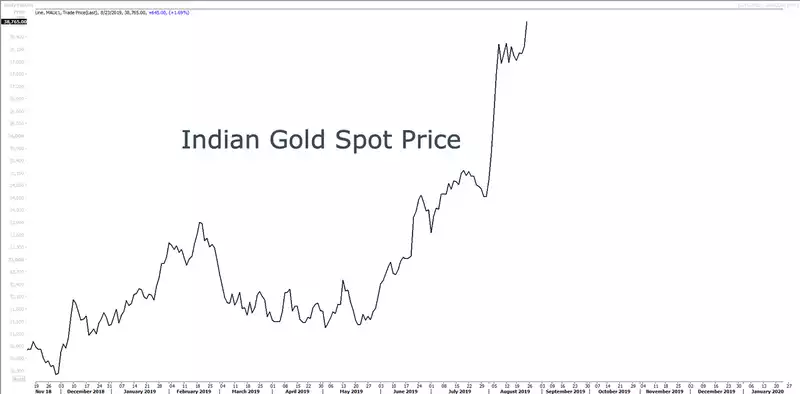Early signs of a pseudo gold standard
News
|
Posted 26/08/2019
|
8163
Gold’s role as a monetary base throughout history is well understood. ‘Gold Standard’ is part of the English vernacular. However since 1973 it has formed no direct role in our currency system as we moved to a Fiat currency system based solely on the promise of our governments to be ‘good for it’ and banks to control it. Throughout history Fiat currencies have predictably failed as, well, man’s greed just can’t be trusted nor contained. Period.
Knowing that history tends to repeat, it is therefore interesting to look for little signs of the breakdown of the Fiat system. We’ve written at length recently about banking bail ins, negative interest rates, banning cash, etc. and of course there is the record breaking move of central banks around the world bolstering their gold reserves. However there are smaller signals emerging too.
Reports over the weekend of India’s economy resorting to using gold as the base for lending are just one sign. India’s shadow banking system continues to show serious signs of cracking with institutions defaulting on bond interest payments and a resulting loss of confidence seeing credit markets freezing and a spike in the cost of credit on the resulting risk and liquidity. This has all contributed to the fall in the rupee and of course the rise in gold against it.

From Reuters:
“"As a lot of NBFCs have become cautious of giving unsecured or even secured loans, we are seeing more customers opting for gold loans instead," said Sumit Bali, chief executive officer of IIFL Finance.
"One can obtain a gold loan and walk out of the branch in just thirty minutes."”
Putting gold up as collateral for new money is the simplest form of a gold backed currency. This is not desperate individuals either, with most demand from farmers and small business owners who simply can’t get either a secured or unsecured loan from a normal or shadow bank as the Fiat system falters.
On a different angle we also see the World Economic Forum predicting that over the next ten years, 10% of the world’s GDP will be stored in crypto assets. Importantly they are not talking about Bitcoin etc, but rather the tokenisation of real assets just as we have done with our Gold Standard and Silver Standard tokens allowing you to hold, transfer (independent of a bank), and spend your gold and silver. For context, 10% is an astonishing $10 trillion of assets, financial products and services becoming digital tokens. From Fintech Weekly:
“Key benefits of tokenization
- Investors can trade real-world assets that due to their low liquidity would have been difficult to exchange in the past.
- Tokens enhance the liquidity of previously hard assets with real estate being the prime example, with its low liquidity and large share of the global asset market.
- Asset tokenization reduces barriers and will attract new investors through fractional ownership, as they can own a percentage of a real-world asset and repackage it with traditional bonds or hedge funds to resell in crypto marketplaces.
- Tokenization increases portfolio diversification and spreads risk as investors can now co-own multiple assets at once.
- Tokenization is a seamless process and speeds up previously difficult and costly trades by reducing administrative expenses through self-authorizing smart contracts, improving the speed of settlements.
As more and more ordinary people are becoming aware of our bank-centric, ‘paper wealth’ system, there will be a greater move into gold, silver and crypto assets. It’s like the people instigating their own version of a gold standard.